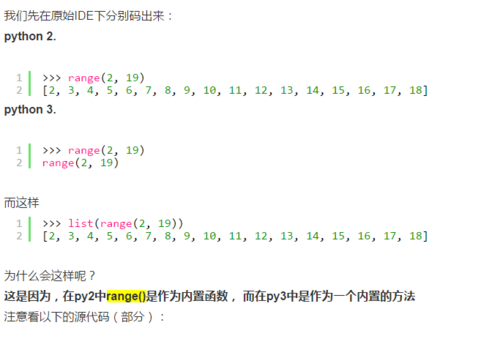当你在不同python版本下使用 range() 时, 需要注意了
PY2
def range(start=None, stop=None, step=None): # known special case of range
"""
range(stop) -> list of integers
range(start, stop[, step]) -> list of integers
Return a list containing an arithmetic progression of integers.
range(i, j) returns [i, i+1, i+2, ..., j-1]; start (!) defaults to 0.
When step is given, it specifies the increment (or decrement).
For example, range(4) returns [0, 1, 2, 3]. The end point is omitted!
These are exactly the valid indices for a list of 4 elements.
"""
pass
PY3
class range(object):
"""
range(stop) -> range object
range(start, stop[, step]) -> range object
Return an object that produces a sequence of integers from start (inclusive)
to stop (exclusive) by step. range(i, j) produces i, i+1, i+2, ..., j-1.
start defaults to 0, and stop is omitted! range(4) produces 0, 1, 2, 3.
These are exactly the valid indices for a list of 4 elements.
When step is given, it specifies the increment (or decrement).
"""
共同学习,写下你的评论
评论加载中...
作者其他优质文章






